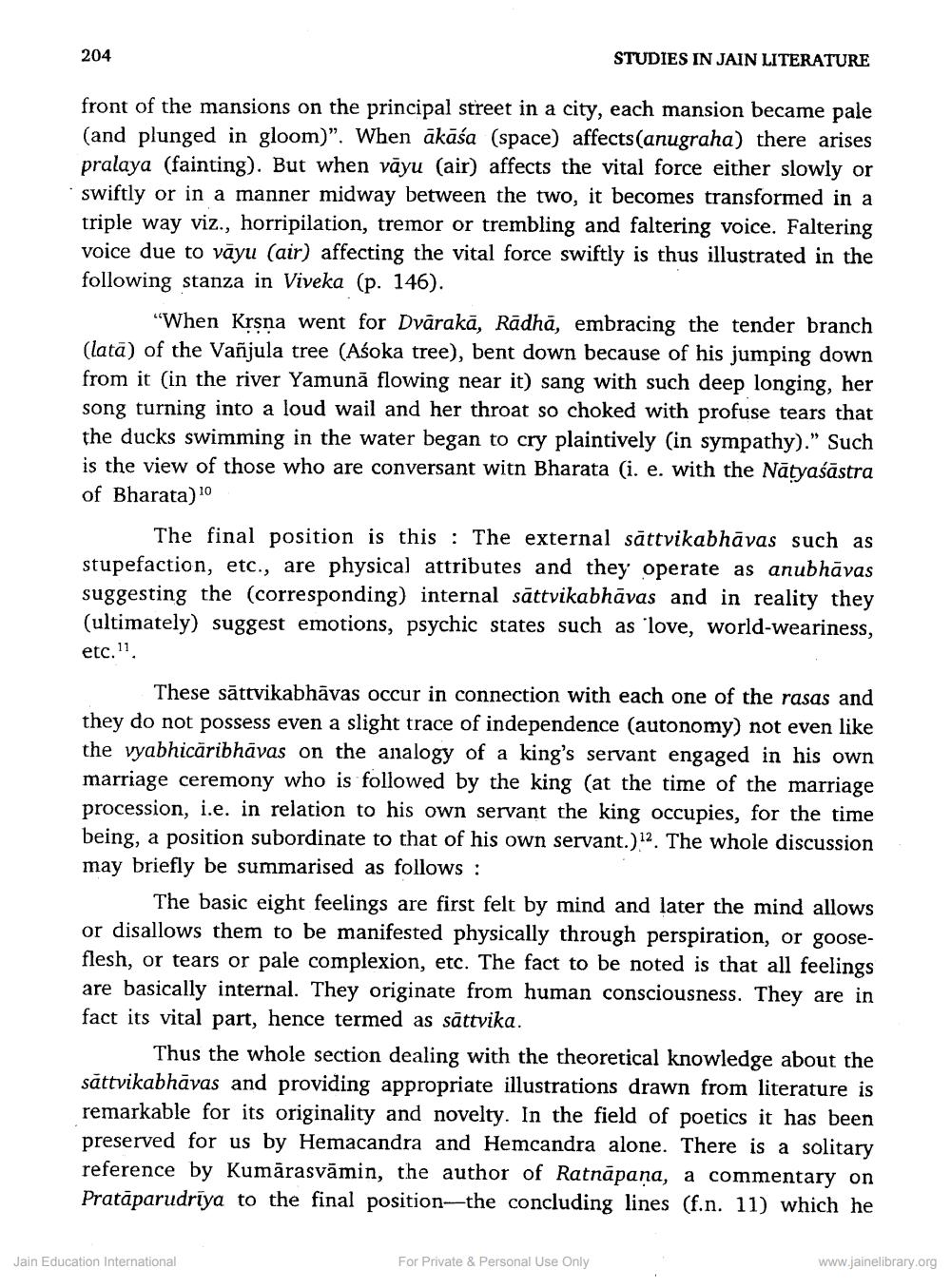________________ 204 STUDIES IN JAIN LITERATURE front of the mansions on the principal street in a city, each mansion became pale (and plunged in gloom)". When akasa (space) affects(anugraha) there arises pralaya (fainting). But when vayu (air) affects the vital force either slowly or swiftly or in a manner midway between the two, it becomes transformed in a triple way viz., horripilation, tremor or trembling and faltering voice. Faltering voice due to vayu (air) affecting the vital force swiftly is thus illustrated in the following stanza in Viveka (p. 146). "When Krsna went for Dvaraka, Radha, embracing the tender branch (lata) of the Vanjula tree (Asoka tree), bent down because of his jumping down from it (in the river Yamuna flowing near it) sang with such deep longing, her song turning into a loud wail and her throat so choked with profuse tears that the ducks swimming in the water began to cry plaintively (in sympathy)." Such is the view of those who are conversant with Bharata (i. e. with the Natyasastra of Bharata) 10 The final position is this : The external sattvikabhavas such as stupefaction, etc., are physical attributes and they operate as anubhavas suggesting the corresponding) internal sattvikabhavas and in reality they (ultimately) suggest emotions, psychic states such as 'love, world-weariness, etc. 11. These sattvikabhavas occur in connection with each one of the rasas and they do not possess even a slight trace of independence (autonomy) not even like the vyabhicaribhavas on the analogy of a king's servant engaged in his own marriage ceremony who is followed by the king (at the time of the marriage procession, i.e. in relation to his own servant the king occupies, for the time being, a position subordinate to that of his own servant.)12. The whole discussion may briefly be summarised as follows : The basic eight feelings are first felt by mind and later the mind allows or disallows them to be manifested physically through perspiration, or gooseflesh, or tears or pale complexion, etc. The fact to be noted is that all feelings are basically internal. They originate from human consciousness. They are in fact its vital part, hence termed as sattvika. Thus the whole section dealing with the theoretical knowledge about the sattvikabhavas and providing appropriate illustrations drawn from literature is remarkable for its originality and novelty. In the field of poetics it has been preserved for us by Hemacandra and Hemcandra alone. There is a solitary reference by Kumarasvamin, the author of Ratnapana, a commentary on Prataparudriya to the final position--the concluding lines (f.n. 11) which he Jain Education International For Private & Personal Use Only www.jainelibrary.org




